#plant-based meat market research
Explore tagged Tumblr posts
Text
Plant-Based Meat Market Registering a CAGR of 18.9% During the Forecast Period 2021-2026
Expanding at an impressive rate of around 18.9% between 2021 and 2026, worldwide demand for plant-based meat products is likely to account for the revenue of over US$13 Mn. A new Fairfield Market Research study indicates that the growth of plant-based meat market will remain influenced by the exploding popularity of vegan, plant-based, gluten-free, and cruelty-from trends among consumers worldwide.
For More Industry Insights Read: https://www.fairfieldmarketresearch.com/report/plant-based-meat-market
Pea Protein Remains the Leading Segment
An increasing number of products that closely match the conventional meat texture, and mouthfeel are being launched on the market over the recent past. This according to the report is one of the strongest indications of the market potentially attracting a large pool of conventional meat consumers. The highly versatile clean label protein product, i.e., pea protein will continue to be the most sought-after segment in plant-based meat market, projects the report.
Sales Proliferate as Plant-based Penetrates Foodservice, and Retail
Several speciality brands have been strengthening their foothold in retail world by extending their outreach with an intent to enhance product availability. Retail behemoths like OmniPork, and Nature’s Basket include some of the pioneering retailers making a larger room for plant-based meats and meat products. The foodservice industry is also showcasing growing interest around plant-based meat products. Considering the shifting consumer behaviour in favour of plant-based meat varieties, more foodservice facilities are making it a point to include the same on their menus. Dominos, and Subway have been a few trailblazers, research identifies.
European Consumer Retains the Top Spot in Fake Meat Consumption
Led by the UK, Europe will continue to reign supreme in terms of consumption of plant-based meat products. The market here is expected to benefit majorly from the expanding vegan population, and strong profiles of plant-based meat manufacturing brands. Given the boom around plant-based meats growing at a rapid pace, even the largest retail chains have been dedicating entire sections to these meat products, which will remain a significant boost for market growth.
Key Companies in Global Plant-based Meat Market
The report has a section dedicated to competition analysis that sheds light on the financial, and strategic profiling of some of the prominent players competing in plant-based meat landscape. Some of the top companies include Beyond Meat, Inc, Conagra, Inc., OmniFoods, Impossible Foods Inc, Kellogg's Company, VBites Food Limited, Maple Leaf Foods Inc, Hormel Foods Corporation, Sunfed, and JBS SA.
Get a Sample Copy of Global Plant-Based Meat Market: https://www.fairfieldmarketresearch.com/report/plant-based-meat-market/request-sample
About Us
Fairfield Market Research is a UK-based market research provider. Fairfield offers a wide spectrum of services, ranging from customized reports to consulting solutions. With a strong European footprint, Fairfield operates globally and helps businesses navigate through business cycles, with quick responses and multi-pronged approaches. The company values an eye for insightful take on global matters, ably backed by a team of exceptionally experienced researchers. With a strong repository of syndicated market research reports that are continuously published & updated to ensure the ever-changing needs of customers are met with absolute promptness.
#plant-based meat#plant-based meat market#plant-based meat market size#plant-based meat market share#plant-based meat market trends#plant-based meat market demand#plant-based meat market growth#plant-based meat market analysis#plant-based meat market forecast#plant-based meat market research#plant-based food#food industry#plant-based#fairfield market research#food and beverage industry
0 notes
Text
Plant-based Meat Market Will Hit Big Revenues In Future
The global plant-based meat market is estimated to be valued at USD 7.9 billion in 2022. It is projected to reach USD 15.7 billion by 2027, with a CAGR of 14.7%, in terms of value between 2022 and 2027. There is a growth in the vegan and flexitarian population, a rise in awareness about the health benefits of plant-based meat over animal-based meat products, an increase in investment by government bodies and R&D activities, and investment of the major food industry giants in plant-based meat products. These factors together are propelling the plant-based meat market.
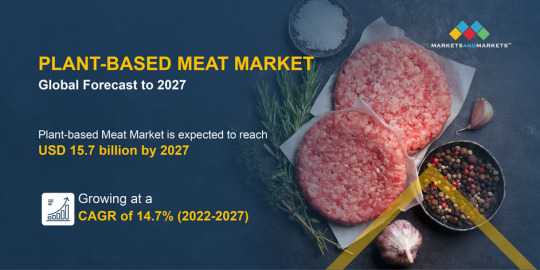
Download PDF Brochure: https://www.marketsandmarkets.com/pdfdownloadNew.asp?id=44922705
By product, the strips & nuggets segment is projected to occupy the second-largest market share during the forecast period
By product, the strips & nuggets segment is projected to occupy the second-largest market share in terms of value by 2027 in the plant-based meat market. The demand for strips & nuggets is on the rise because of their taste appeal and consumer popularity, particularly in American and European countries. Thus, due to their rising popularity, several companies are focusing on expanding their product portfolios by incorporating other strips & nuggets made from chickpeas, wheat, soy, corn, rice, and oats. All these factors together are projected to contribute to the market share of this product category by 2027.
The food retail segment among distribution channels is estimated to have the largest market
Based on the distribution channel, the food retail segment is estimated to account for the largest share of the plant-based meat market in 2022. Food retail refers to operating retail, supermarkets, hypermarket stores, and other stores where various products, such as grocery items, vegetables, uncooked meat, and frozen products, are made available to consumers. The distribution channel is already popular among consumers worldwide due to the wide availability of various products. Therefore, this distribution channel is being used by established plant-based meat companies and startups to increase the penetration of their products in the market, making it the largest segment during the forecast period in the plant-based meat market.
Request Sample Pages: https://www.marketsandmarkets.com/requestsampleNew.asp?id=44922705
Europe region holds the largest share in the plant-based meat market
The European plant-based meat market accounted for the largest market share in 2020. This dominance is attributed to the rising health concerns among consumers regarding meat products and the exponentially growing veganism trend in the region. Furthermore, European plant-based meat manufacturers focus on developing innovative products backed by appropriate research and development facilities available in the region. Several European retailers and supermarkets have added plant-based meat products to their product range to cater to the rising demand for plant-based meat products across the region.
This report includes a study on the marketing and development strategies, along with the product portfolios of leading companies. It consists of profiles of leading companies, such as Beyond Meat (US), Kellogg Company (US), Impossible Foods Inc. (US), Maple Leaf Foods (Canada), Unilever (UK), Conagra Foods (US), Tofurky (US), Gold&Green Foods Ltd (Finland), Sunfed (New Zealand), and Monde Nissin (Philippines).a
#Plant-based Meat Market#Plant-based Meat#Plant-based Meat Market Size#Plant-based Meat Market Share#Plant-based Meat Market Growth#Plant-based Meat Market Trends#Plant-based Meat Market Forecast#Plant-based Meat Market Analysis#Plant-based Meat Market Research Report#Plant-based Meat Market Scope#Plant-based Meat Market Overview#Plant-based Meat Market Outlook
0 notes
Text
Plant-based Meat Industry ESG Thematic Report, 2023
The plant-based meat market is growing at a quick pace with the recent movement of veganism or vegetarianism. A shift to plant-based meat offers health benefits such as decrease in the risk of cardiovascular diseases, cancer, cholesterol, and inflammation. Additionally, increasing environmental consciousness has also triggered a shift from animal farming.
Read More @ https://astra.grandviewresearch.com/plant-based-meat-industry-esg-outlook
About Astra – ESG Solutions by Grand View Research
Astra is the Environmental, Social, and Governance (ESG) arm of Grand View Research Inc. - a global market research publishing & management consulting firm.
Astra offers comprehensive ESG thematic assessment & scores across diverse impact & socially responsible investment topics, including both public and private companies along with intuitive dashboards. Our ESG solutions are powered by robust fundamental & alternative information. Astra specializes in consulting services that equip corporates and the investment community with the in-depth ESG research and actionable insight they need to support their bottom lines and their values. We have supported our clients across diverse ESG consulting projects & advisory services, including climate strategies & assessment, ESG benchmarking, stakeholder engagement programs, active ownership, developing ESG investment strategies, ESG data services, build corporate sustainability reports. Astra team includes a pool of industry experts and ESG enthusiasts who possess extensive end-end ESG research and consulting experience at a global level.
For more ESG Thematic reports, please visit @ https://astra.grandviewresearch.com/
#Plant-based Meat Industry ESG#Plant-based Meat Industry#Plant-based Meat Market#plant-based meat research#Plant-based meat environmental impact#Is plant-based meat sustainable
0 notes
Text
I think what makes carpenter's The Thing stand out from other body-snatcher type movies is the viscera. Up until that point the body-snatcher market had been inundated with plant-people and pod-people and fungus-people etc. Even The Thing From Another World (which is based on the same short story) had a plant-based lifeform as the villain. And I think a lot of this stems (haha) from body-snatchers being largely a metaphor for communism in American film. It's a very human-centric way to look at the world: all plants are the same, they're cold, they're unfeeling, they're totally rational, but vicious when they need to destroy man, to destroy progress. Making the Thing a meat creature really drives home how desperate it also is. It's also an animal, it's also trapped and terrified, and we don't know how rational it is. We don't know it's motivations other than to get out of the cold that put it in hibernation. Antarctica is a desert, it's unlivable. The Thing just wants to survive, and if that means taking another life, so be it.
In short I guess, The Thing is survival horror, both for the researchers and The Thing
67 notes
·
View notes
Text
Easter Monday
pairing: Harry Styles x slavic(polish)!fem!reader
summary: Harry nad YN are spending their first Easter together, embracing their cultural differences. To celebrate Easter Monday Harry found something very interesting on the internet, hoping to make YN happy, he decided to surprise her with it - id didn't go as planned.
word count: ~1,3k (a little baby)
a/n: so i found out about this holiday in Poland and decided that it would make a fun, fluffy piece for the slavic!reader trope. if i got something wrong, please do tell me!
(another piece of wiriting with a slavic! reader is here > BRITs awards <)
masterlist

When Harry met YN, he promised himself to learn about Polish mores, some words to understand at least a part of what YN was talking about with her family back home and Polish food. Being a pescatarian excluded him from trying quite a few national dishes but YN found enough alternatives for him to eat. He loved it (or so he told YN).
Here he was, on Easter Sunday evening, researching Polish mores during Easter. For the first time in their relationship, they decided to spend those holidays together at Harry’s home in London.
The cultural differences were noticeable. YN didn’t grow up with Egg hunting on Sunday morning, but with going to church on Saturday to have food sacred. On Sunday morning there was an Easter breakfast - eggs (so many colourful eggs), the sour rye soup (yes, soup for breakfast) served in a round bread bowl, variable meat on the cold platter and, most importantly, cakes - mazurek and babka. Harry felt that he’d especially love those cakes.
Harry growing up didn’t do much for Easter. He enjoyed sleeping in for a few days, hunting eggs on Sunday and then going on with his life. His family never attached much importance towards Easter - they used those days for family time, hosting board games’ tournaments with a feast happening in the dining room.
So saying that YN’s way of celebrating was a shock for Harry was easily not enough.
“You want to celebrate the way that I’m used to?” She asked him two months before Easter.
“Yes.” He kissed her knuckles. “I want to spend it the way you always do. We’ll paint those colourful eggs and then eat this big breakfast.”
“Pisanki, those are the colourful eggs. And that big breakfast is almost not edible for you.”
“Because of meat?” YN nodded her head. “Well, then we’ll go to the local market and buy some plant based alternatives. Polish Easter breakfast with a twist. What do you say?”
“I love it.”
That was what they had done.
Harry invited his mother, sister and her fiancé to celebrate with them. All of them sat down with brushes and paint, and decorated the eggs. YN prepared the breakfast - with plant based sausage, and with two cakes baked just the way her grandma did, while Harry was responsible for taking care of the guests, saying “I’m so sorry, but I know, I’ll just ruin whatever you’re doing there, my love."
Everybody enjoyed breakfast, agreeing that soup being present was a mistake, but wasn’t untasty. Cakes did a furore - Anne asked for a recipe and Gemma promised to beg for them constantly. YN was happy that people appreciated her culture.
And when people left, just mere two hours ago, Harry and YN tidied up in the house and she went to sleep, he, on the other hand sat in front of his computer, searching. ‘What Poles do on Easter Monday?’ was a question tapped into a search bar. After clicking the first website linked, with a shock appearing on his face, eyebrows raising higher and higher with each word read, Harry stood up and went to the bedroom. He needed to visit a park tomorrow’s morning to get what was needed.
The next day YN woke up to a cold bed, which was more than expected - Harry was an early bird (woke up as early as 5 am) when YN liked to sleep until at least 6:30. After doing her morning stretches and going to the bathroom, she moved downstairs to start on the breakfast. Harry usually waited for her, so they could eat together and talk about their plans for a day.
“Harry! Baby! I’m making coffee, you want some?” She called into an (probably) empty house.
While not getting an answer, she went to the kitchen starting Harry’s fancy coffee machine. She needed caffeine.
It was strange that Harry didn’t leave any note, saying where he had gone. Nothing on the fridge, or under a fruit basket and no text either. She started to get worried when halfway through her first meal of the day Harry’s plate was still full and slowly getting cold.
Over the speakers, YN listened to Lana Del Rey’s album Ultraviolence, singing silently under her nose. She didn’t hear the back door slowly open and close. She didn’t hear the steps nearing her body. Most importantly, she didn’t hear the movement of the bucket full of water being directed at her.
“Ah!” She screeched when the cold water covered her whole body. From the top of her head to her toes, there was no dry spot. She was soaked and not in a good way.
“Happy śmigus-dyngus day!” Harry screamed, unconsciously murdering the language with a smile on his face, and started to hit YN with pussy willow branches.
“Harry! Are you out of your mind?” YN asked, trying to simultaneously flick the water from her face and catch the branch that had been continuously hitting her upper arm. “Harry, stop it!”
“What?” He asked, confused, stopping mid-air. “Why did you stop me? It’s a tradition!”
The ligt bulb switched on in YN's mind. She understood, for a moment looking at Harry with an open mouth and big eyes. “ Oh God!” She finally laughed. “Oh my God!”
“What - what is going on?”
“Harry, did you - did you find about this day on the internet?”
“Yes, obviously. Where would I get information about something like this from?” He still couldn’t comprehend the tradition that he was taking part of. What was the point of it?
“Maybe me. Someone that actually celebrates it?” YN prompted.
“I wanted to surprise you,” Harry said quietly, putting down the bucket and moving around the kitchen to get YN a clean tower.
“Listen - thank you -” she responded, after getting the towel, “- people don’t do it like this anymore.” She began drying herself off. “There is no hitting with branches. And not only boys are throwing water - it’s not gender-driven.”
Harry sat down in front of YN, getting sad.
“I’m sorry,” he apologised, clasping her hands in his. “I - I just wanted to do something that would make you feel like people around you know what you celebrate and do on specific holidays. ‘Supposed to be a surprise. Didn’t work. I’m sorry.” he kissed her knuckles, looking at her like a lost puppy. His eyes big and a little pout present on his lips.
“And I appreciate it so much.” She pecked his pout away, making him smirk. “These holidays, you've made me feel like I was back home. it means the most to me. Just didn’t like getting bitten up with a pussy willow.”
“Not a fan?” Harry’s smirk getting more daring.
“Not really. When it comes to Easter Monday, I’ve always just splashed people with water and called it a day. Well, when my cousins and I were younger, we used to just pour water on each other from the garden hose. It was entertaining. But always doing it outside of the house.” YN gave Harry a look towards the wet floor. “If not, we were cleaning not only the water but the whole house.”
“Am I going to be doing the same?” Harry asked with the same smirk from before, he enjoyed it.
“Yep. Absolutely.” YN stood up rapidly and moved to the closet to give Harry a mop. “Chop, chop!”
With a laugh, Harry gripped the mop and started cleaning. Unfortunately for him, the bucket he used was voluminous, and the amount of water on the floor was significant. While looking for the bucket to wring out the excess water, Harry lost his focus. Suddenly, his whole body started shivering from the cold liquid dripping from his head and down to the floor.
“Happy śmigus-dyngus day!” YN laughed at Harry.
Quickly enough, they both were running around the backyard - most clothes discarded in a run - under the rain of water from the garden hose. YN felt like a careless child again, and Harry decided just then he always wanted to see her that happy.
Sometimes misinformation on the internet could lead to good times, he thought. But only sometimes.
#harry styles x reader#harry styles x you#harry styles imagine#harry styles one shot#harry styles fluff#harry styles fanfiction#slavic!reader#polish!reader#harry styles
194 notes
·
View notes
Text
youtube
It was a late-career epiphany that led “wacky genius” Pat Brown to abandon his academic career and commit himself to fighting global warming and biodiversity collapse. He did it, against all odds, by developing a surprising product: the revolutionary and delicious plant-based Impossible Burger.
Pat Brown is a preeminent biochemist and Stanford professor with a most impressive resume. He pioneered research into the AIDS virus, invented DNA imaging tools, and helped revolutionize open access to scientific research. Then, well into his successful career, he took a sabbatical “to figure out what was the most important thing I could do to make the best possible world?”
After coming to the conclusion that the impact of animal agriculture on climate change and biodiversity loss was unacceptable, Pat decided to do something about it. He ditched his lab and began working on the creation of the Impossible Burger: a plant-based meat alternative that uses 96% less land, 87% less fresh water, and generates 89% less greenhouse gas emissions than traditional beef burgers. Through groundbreaking science and unwavering commitment, Pat's work has not only transformed the culinary landscape, it is providing real hope for a more sustainable and ethical food system.
Now, having proven that plant-based meat can compete with animal products on the open market, Pat is jumping ahead to the next big question: What’s the best way to use the land that can be freed up from raising cows and other livestock? On a thousand acres in Arkansas owned by the Impossible Foundation, Pat and fellow scientist, Michael Eisen are boots-deep into a real-world case study on turning carbon-emitting cattle ranches into carbon-capturing forests that also promote biodiversity. They call it the Carbon Ranch.
Follow us: / wildhopetv
Join our community: https://wildhope.tv
Get our newsletter: http://eepurl.com/irGMng
Share this with a friend!
#Nature on PBS#Wild hope#solarpunk#impossible burger#vegan burger#vegan#Pat Brown#hiv#aids#Michael Eisen#USA#Arkansas#Carbon Ranch#reforestation#rewilding#climate change#climate crisis#climate collapse#climate chaos#climate breakdown#global warming#global heating#Youtube
4 notes
·
View notes
Text
Q “How do you tell if someone is a vegan?”
A: “You don’t have to, they’ll tell you.”
Maybe it’s jokes like that, highlighting society’s stereotypical view of vegans as arrogant virtue-signallers, that have led to a slump in demand for some plant-based alternatives to meat and dairy, as well as a slew of business failures among manufacturers of plant-based food – most recently Heather Mills’s company VBites, which has just announced it is going into administration.
Despite veganism being endorsed by a number of celebrities, such as the BBC’s controversial wildlife presenter Chris Packham, it doesn’t seem to have made much headway beyond those segments of the market that are either apocalyptic about climate change or fanatical about animal rights – or both. Perhaps much like Mr Packham himself.
Then there’s the argument that veganism is good for your health, which has been on an increasingly sticky wicket, deconstructed by books such as the award-winning The Great Plant Based Con by Jayne Buxton. There is also a growing backlash against ultra-processed foods, which many vegan products are.
But Ms Mills had the gall to blame “gaslighting” by the meat industry for the collapse of her vegan food empire. As a member of the meat “industry”, I take exception to that. Of course it is not really an industry at all in the UK – it is made up of family farms, in stark contrast to the public relations agencies promoting vegan diets.
Farmers have been hounded and smeared by radical vegan activists for years. I wrote in these pages back in September about Laura Corbett, the Gourmet Goat Farmer, who was targeted by vegan “activists” on social media. Her business was attacked by malicious Trip Advisor reviews.
Indeed, I would suggest that consumers have been put off by the taint of fanaticism surrounding vegan foods. Recent research has shown that omnivorous consumers are less likely to buy products if they are labelled with the V-word. While it is too early to consign veganism to the history books, I suspect when that history is written it will be seen as a fad that was rejected by the British public largely because the wild behaviour of its more extreme followers trashed the brand.
It always seemed unlikely that, after millennia evolving on an omnivorous meat-rich diet, we would then wholly abandon it. There is only one species that has ever done that: the panda. And that has not been an unqualified success.
If the vegans had wanted to actually persuade people to eat better, rather than hector them, they could have chosen a much less blunt message. But a more effective, nuanced approach, focused on stopping the harmful aspects of meat and dairy production, was not pursued and all livestock farmers were tarred with the same brush. This happened even after the positive environmental role of grass-based beef farmers was recognised by the authorities, as they began to be paid carbon credits for the net carbon they sequester.
We can’t allow vegans to continue to ruin the debate about food. We need a real food counter-revolution.
21 notes
·
View notes
Text
Get creative with veggie burgers
Check out my latest column
The unofficial start of summer passed last weekend, which means grilling season has begun, at least it has here in the Northeast.

Baked Falafel Burgers. You’ll be amazed at how vibrant the flavors are, how the parsley and lemon shine through. (Photo by Evi Abeler)
A juicy hamburger, a perfectly cooked steak, ribs, BBQ chicken or grilled hot dogs come to mind most often when one thinks of grilling or barbecue. However, if you have guests who are vegetarian or vegan, these menu items simply won’t do. A mass-produced packaged veggie burger is what most of us think is all that’s available to serve them.
With plant-based diets on the rise, we need to be creative in what to offer at a barbecue get-together. There are freshly made options available at the ready food counter at markets, and there is a bounty of delectable recipes to prepare at home.
As I have been trying to incorporate more vegetables in my diet, when dining out, trying chef-driven innovative varieties of veggie burgers is part of the fun. Those that don’t make the mark are when the restaurant purchases them ready-made and frozen. The times I have really enjoyed one, the chef put creative thought into the dish.
I am always on the lookout for tasty recipes for veggie burgers. When I saw the front cover of “Veggie Burgers Every Which Way: Fresh, Flavorful & Healthy Plant-Based Burgers” by Lucas Volger (2023, The Experiment, $25.95), I got hungry looking at the beautiful and hearty burger.
What also caught my attention was the back cover that says, “Veggie burgers for veggie lovers and curious carnivores alike.”
In his preface the author writes, “I’ve never been very excited about a veggie burger that tastes like meat. My perspective in this book was, and continues to be, that veggie burgers should be creative expressions of vegetables.”
Interestingly, the vegans I know are not interested nor excited about Beyond or Impossible burgers because they, too, aren’t looking for the texture and taste of meat. On the other hand, there are carnivores that choose to go meatless every so often and replace a meat burger with something that closely replicates it.
Once considered a hippie food … where did the creation begin? As with most food items or dishes, there are a few claims as to its founding. There’s one that was mentioned several times in my research.
It was in London in 1982 when Gregory Sams, a nutritionist, invented the first commercially made veggie burger he called VegeBurger. It was a dry mix packet. Fast-forward several decades, and the humble veggie burger has been elevated.
Volger’s book, with unique, delicious recipes tailored to a variety of diets (over half are vegan and/or gluten free), will excite each palate and suit every craving at this summer’s barbecues. The book is all-encompassing, with chapters on bean and grain burgers; vegetable burgers; tofu, seitan and TVP burgers; burger buns; sides; salads and fries; condiments and toppings. Volger also shares his universally fail-safe cooking methods.
So, move over freezer patties and faux meats and welcome Baked Falafel Burgers (recipe below); Spicy Peanut and Carrot Burgers (recipe below); Quinoa, Red Bean and Walnut Burgers (recipe at https://bit.ly/3Vipgo4); Sesame Sweet Potato and Cabbage Burgers; Corn Burgers With Sun-Dried Tomatoes and Goat Cheese; Tofu and Chard Burgers; and Tortilla-Crusted Stuffed Portobello Burgers.
Baked Falafel Burgers
Vegan, gluten free
Makes four 4-inch burgers
The headnote says: “In this falafel method, the chickpeas are soaked overnight but not cooked. (If we were deep-frying the burgers rather than baking them, this would be the traditional falafel method.) Store-bought falafel mixes — many of which are wonderful — use ground, unsoaked dried beans, but I find that the soaking makes for a significantly less dense, more tender falafel. The mixture is a bit more delicate than other burgers in this book, but you’ll be amazed at how vibrant the flavors are, how the parsley and lemon shine through. Serve with Cucumber Yogurt Sauce, Tahini Yogurt Sauce or plain tahini along with a squirt of sriracha, as a nod to the street food that fed me throughout my college years. Unfortunately, cooked chickpeas will not work in this recipe; there will be too much liquid and the burgers will fall apart as they cook.”
Ingredients:
1 cup dried chickpeas, rinsed thoroughly
1 onion, roughly chopped
2 garlic cloves
½ cup roughly chopped fresh parsley
Zest of 1 lemon plus juice of ½
1 tablespoon toasted cumin seeds
½ teaspoon baking soda (GF)
¾ teaspoon salt
½ teaspoon freshly ground black pepper
¼ teaspoon cayenne pepper
1 tablespoon chickpea or all-purpose flour, if needed
Olive oil, for greasing
Directions:
Cover the chickpeas with 4 to 5 inches of water in a bowl and let stand for 24 hours. Drain thoroughly. Preheat the oven to 400 degrees.
Combine the chickpeas, onion, garlic, parsley, lemon zest and juice, cumin, baking soda, salt, pepper and cayenne in a food processor. Pulse until coarsely combined. If the mixture is struggling to come together, add a bit of water, but no more than 2 tablespoons. (The burgers will fall apart when cooking if there’s too much liquid.) If water is added, stir in the chickpea flour. Adjust seasonings. Shape into 6 patties, about 1/3 cup each. It will be a fairly wet dough.
Liberally oil a baking sheet. Transfer the patties to the baking sheet and place in the oven. Bake for 15 to 20 minutes, flipping them once halfway through, until golden and firm. Serve warm.

Spicy Peanut and Carrot Burgers. Peanut butter and a few fragrant aromatics serve to amplify and enhance the carrot, making this another one of those veggie burgers that’s all about the vegetables. (Photo by Christina Heaston)
Spicy Peanut and Carrot Burgers
Makes four 6-inch burgers
The headnote says: “This recipe helped me realize that coarsely shredding hardy vegetables, like carrots, is the secret to creating a vegetable-centric veggie burger — it preserves more of a vegetable’s texture than, say, roasting and puréeing it, and moreover it gives an interesting and varied texture to the finished burger. Peanut butter and a few fragrant aromatics serve to amplify and enhance the carrot, making this another one of those veggie burgers that’s all about the vegetables. A natural peanut butter will deliver a clean peanut flavor, whereas a processed one that has added sugar will be kind of cloying here. I love these paired with a zesty cabbage slaw or some shredded cabbage that’s tossed with a bit of salt and lime juice.”
Ingredients:
3 tablespoons olive oil
4 scallions, green and white parts, thinly sliced
3 garlic cloves, minced
1 tablespoon finely grated fresh ginger
1 serrano chile pepper, finely chopped (and seeded, if desired)
4 cups grated carrots (about 8 medium carrots)
1 teaspoon salt
1 teaspoon ground coriander
¾ teaspoon ground turmeric
½ teaspoon ground cinnamon
1 egg
2 tablespoons natural peanut butter
Zest of 1 lime and juice of ½
¼ cup roughly chopped cilantro
½ cup panko or coarse bread crumbs
Directions:
Heat 1 tablespoon of the oil in a large, lidded sauté pan over medium heat. Add the scallions and cook until they just begin to soften, about 2 minutes. Add the garlic, ginger, and chile and stir for 30 seconds, until fragrant. Stir in the carrots, salt, coriander, turmeric, and cinnamon. Cover and cook for 6 to 8 minutes, until the carrots are soft but not mushy.
In a mixing bowl, whisk together the egg, peanut butter, lime zest and juice. Stir in the carrot mixture and the cilantro. Fold in the panko. Let stand for about 10 minutes, so the panko soaks up some of the moisture. Adjust seasonings. Shape into 4 patties, about 1/3 cup each.
To cook, warm a wide skillet over medium heat, then add the remaining oil. Add as many burgers as will fit comfortably without crowding the pan (usually 3 burgers will fit into a 10-inch, and cook until browned and crisped on the bottom, 5 to 7 minutes, then flip and repeat on the other side. The burgers will firm up a bit as they cook, and further once they’re removed from the heat and have cooled slightly. Serve warm.

Watermelon and Citrus Salad. Make this salad when watermelon is at its peak, sugar-sweet and juicy. (Photo by Evi Abeler)
Watermelon and Citrus Salad
Vegan, gluten free
Makes 4 servings
The headnote says: “Make this salad when watermelon is at its peak, sugar-sweet and juicy. I prefer basil to the fresh mint typically used in watermelon salad, but feel free to use mint instead.”
Ingredients:
Vinaigrette:
¼ cup fresh orange juice
Juice of 1 lime
1 tablespoon red or white wine vinegar
Mustard
1 shallot, sliced into rings
¼ teaspoon salt
¼ teaspoon ground white pepper
Directions:
To make the vinaigrette, combine the orange juice, lime juice, vinegar, mustard, shallot, salt and pepper in a small bowl or jar. Let stand for 10 minutes.
Salad:
2 oranges
6 cups watermelon, cut into 1-inch cubes
¾ cup thinly sliced fresh basil
½ cup toasted sliced or slivered almonds
½ cup crumbled feta cheese (optional)
Olive oil, for drizzling
Directions:
Slice off the top and bottom ends of the oranges and place the flat bottom on a cutting board. With a sharp chef ’s knife, cut off the peel in strips all the way around the orange, following the curve of the fruit. Slice the oranges into ¼-inch-thick rounds.
Arrange the watermelon and orange over a platter, then drizzle with the vinaigrette. Just before serving, garnish with the basil, almonds and feta cheese, if using, and drizzle with olive oil.
Recipes from “Veggie Burgers Every Which Way, Second Edition: Fresh, Flavorful, and Healthy Plant-Based Burgers — Plus Toppings, Sides, Buns, and More” by Lukas Volger, 2010, 2023. Reprinted by permission of the publisher, The Experiment. Available everywhere books are sold. Website: theexperimentpublishing.com.

Stephen Fries is professor emeritus and former coordinator of the Hospitality Management Programs at Gateway Community College in New Haven, Conn. He has been a food and culinary travel columnist for the past 16 years and is co-founder of and host of “Worth Tasting,” a culinary walking tour of downtown New Haven. He is a board member of the International Association of Culinary Professionals. Email him at [email protected]. For more, go to stephenfries.com.
10 notes
·
View notes
Text
How Innovation Is Reshaping the Food Industry

Food innovation refers to introducing novel ideas, products, and technologies that change how society produces, processes, packages, distributes, and consumes food. It goes beyond merely creating new recipes or flavors - food innovation encompasses advances in agriculture, food science, sustainability, and packaging. The goal is to enhance efficiency, safety, nutrition, and the overall consumer experience.
The need for food innovation arises from the ever-changing demands of consumers and the pressing challenges faced by the industry. As the global population continues to grow, so does the demand for food. Additionally, sustainability concerns, climate change, and limited resources prompt exploring alternative food growing and production methods. Innovations in food aim to enhance food security, minimize environmental impact, and offer consumers healthier, more diverse options.
Food innovation occurs through a combination of research, collaboration, and creativity. Scientists, entrepreneurs, farmers, and food industry professionals work together to develop new technologies and processes. Research institutions and startups play a crucial role in conducting experiments, testing new concepts, and bringing innovative products to the market.
In recent years, the food industry has witnessed groundbreaking innovations reshaping how people interact with food. The plant-based movement has gained immense traction, with plant-based alternatives for meat, dairy, and seafood becoming mainstream. Companies have developed plant-based burgers, vegan cheeses, and sustainable seafood alternatives using cutting-edge technologies. Beyond plant-based options, innovations have also focused on alternative protein sources, such as insect-based proteins and lab-grown meats, offering sustainable and protein-rich alternatives.
Swedish startup Mycorena is boosting microbial protein production through its fungi-based mycoprotein called Promyc. This ingredient can be used to create meat and tuna alternatives, beverage additives, and dessert ingredients, offering plant-based and sustainable options for consumers.
Finnish startup Onego Bio has developed a product genetically identical to egg whites using fermentation, and without using actual chickens. It uses precision fermentation of a microflora called Trichoderma reesei to produce ovalbumin, the protein found in chicken egg whites. This technology offers a sustainable and animal-friendly alternative for various food applications, including baked goods, desserts, sauces, and dressings.
Companies like New Culture are incorporating animal-free casein into their cheeses through precision fermentation. This breakthrough allows them to produce animal-free mozzarella cheese, offering a delicious and cruelty-free alternative to traditional dairy products.
In addition, consumers increasingly seek transparency in food choices, leading to the clean label movement. Brands are responding by using simple natural ingredients and avoiding artificial additives and preservatives.
Breakthrough innovations in the food industry are revolutionizing how society grows, produces, and consumes food, focusing on sustainability, nutrition, and convenience. One such innovation is plastic-free and smart packaging. Food companies are exploring biodegradable and even edible packaging solutions in response to environmental concerns. Smart packaging using nanotechnology is also gaining popularity, allowing consumers to assess food safety and quality easily.
The Internet of Things (IoT) in agriculture employs sensors and data analytics for optimizing crop conditions, irrigation, and pest control, reducing resource usage. Food waste reduction solutions, such as surplus food redistribution platforms, are being developed to combat the global food waste crisis. Moreover, biotechnology and data science advances enable personalized nutrition, tailoring dietary recommendations to individuals based on their genetic makeup, lifestyle, and health goals. These innovations promise a more sustainable, healthier, and efficient food future.
Food innovation is driving a remarkable transformation in the food industry, responding to the challenges and opportunities of today. From new plant-based products to sustainable agriculture and cutting-edge technologies, the future of food promises to be more diverse, nutritious, and sustainable. As consumers, entrepreneurs, and stakeholders continue to embrace innovation, the food industry's journey toward a more resilient and conscious future is set to continue.
13 notes
·
View notes
Text


14 Associations for Chad and Kasha Tagged by @cactusxwren! Chad / Kasha:
Animal: Cat - She likes cats a lot. (Especially Lyyhia... lmao) Fox - Taking a little inspiration from the kitsunes she's been on the hunt for, one of the harder yokai to find...
Color: Red - It's the only color that works for her, in her mind. Blue - Most of her magic has a deep ocean-blue, almost purple aura to it, so it'd be the color she's most known for. A good alternative would be green, for her eyes.
Song (oh god I have so many uhhhh): I Hear a Symphony by Cody Fry - A romantic song about meeting someone who changes your life... Through a Cloud, Darkly by Chris Christodoulou - A foreboding-sounding aura, with far-off bells and otherworlds murmurs, the perfect sound for traversing to the more mystical realm. (I HAVE TOO MANY SONGS ON PLAYLISTS, PLESE GO LOOK AT THEM TOO)
Number: One - Iunno what to put for numbers, so I'm gonna say 1 for how many working eyes Chad has. Five - A pentagram is a prominent symbol in Onmyodo, based on the Five Elements, so it'd show up a lot in her magic.
Day or Night: Day - She gets up way too early, before the crack of dawn, to get the most out of the whole day. Night - It's where most yokai show themselves, after all.
Plant: Pineapple - Her absolute favorite fruit, she'd put it on anything and it'd be better (for her, and often for others, too!) Plum Tree - a pretty, fruiting tree, perfect for relaxing under after a long hunt.
Smell: Barbecue and Smoke - She often has a smoked-up face, from cookin' meat all day. Cherry Blossom - Kasha's preferred incense stick of choice, purchased at the Wulf Spiritual Shop at the Yokai Night Market.
Gemstone: Pearl - A surprising choice, it's actually the magical focus in Chad's eyepatch that decided this one! All - She enjoys all kinds of jewelry, splurging often just to look nice when on her occasional walks through Kugane.
Season: Spring - Not too hot, not too cold, perfect for gettin' out and doin' stuff. Fall - a nice, chill atmosphere, perfect for staying inside and reading, or a relaxing walk through the woods.
Place: Dan's BBQ - The place she works at every Monday, and where she's probably the most happy... It's where she met Lyyhia! The Office - Her favorite research location, she brings all kinds of yokai home - it's the most safe place for her to interview.
Food: Yes - She's a chef, of course she likes all kinds of food! Expensive seafood - though it's not in her regular diet, she gets special treatment when dining out in public. However, when her student's around, Dango is a good substitute.
Astrological Sign: Thaliak, The Scholar - Chad's surprisingly good at learning new things, though she'd be loath to admit it... Oschon, the Wanderer - Even though she never learned about the Twelve, it definitely fits her, leaving home and all that.
Element(s): All of them - Chad's both a Conjurer and Thaumaturge (and learning Red Magic), but her most common element used is probably Earth. Lightning/Wind - Most of Kasha's damaging talismans are lightning to stun, and she uses wind to assist with moving quickly.
Drink: Golden Pineapple Juice - Lyyhia recently got it for her as a gift, she's been enamored with trying to recreate it! Earthy teas - A mainstay in her diet, though she'd settle for sake when with her student.
Tagging @miqomonkly @shroudkeeper @vseelyrei and anyone else whomt wanna do it!
8 notes
·
View notes
Note
Do you have any tips on being vegan while traveling in another country? I'm visiting Portugal and Spain this summer, have never been out of the u.s. and basically only know English. Have done a bit of research on typically plant based common menu options, found many vegan/vegan friendly restaurants in the bigger cities we're visiting, and planning to use translation app when buying groceries, but anything I'm missing? (Or any special vegan treats i could find in Europe and not the u.s., for that matter?)
I’ve found the HappyCow app to be invaluable when travelling, never been to a US or European city that doesn’t have plenty of options listed. Even if you’re somewhere a bit more rural, you can always opt for renting an apartment you can cook in, which tends to be cheaper than a hotel anyway.
As for generally navigating veganism there, do learn some key phrases, how to reserve a table, how to order, learn the translations of milk, cheese, meat etc. and all your pleasantries. In the big cities people tend to respond to you in English anyway when they hear your accent but they appreciate the effort and can overcome any communication barriers.
As for treats, find a supermarket or a health market (there are a few European versions of these) and just try what they’ve got - they often tell you they’re vegan on the packaging in English. HappyCow will show you local restaurants, and many will offer veganised versions of local food which you should definitely try. Search by vegetarian and vegan friendly as opposed to exclusively vegan, then you’ll get a larger range. There are loads of options in Lisbon and Madrid but can’t speak for anywhere else.
The difficulty you may encounter that you may expect less is tea and coffee rather than food. You can always go to a chain of course but I’m still always surprised that plant milks aren’t as widely available in some European cities as they are in the UK and US, so know how to ask for them or just order it black if you don’t mind it that way. You can get plant milk in plenty of cafes but you can’t just expect it to be a available everywhere like you can here in the UK and many parts of the US.
I can’t emphasise enough how worthwhile it is to spend some time studying the languages though, you obviously can’t learn it in a short space but it’s definitely polite and so worthwhile to get a few basics down. Just don’t arrive knowing no Spanish or Portuguese as it is generally considered quite rude and people may be less likely to help you out with your ordering. Have a good time!
14 notes
·
View notes
Text
Plant-Based Meat Market is Estimated to be Worth US$13 Bn by 2026
“According to Fairfield Market Research, the Global Plant-Based Meat Market is Expected to be worth US$13,035.6 Mn by 2026, Registering a whopping CAGR of 18.9% Between the Forecast Years of 2021 and 2026.”
Fairfield Market Research recently released a report in one of its most attractive research domains. The report provides complete growth forecast, and analysis of global plant-based meat market, clearly highlighting solid popularity of plant-based meat product varieties among consumers worldwide. While food industry continues to be significantly influenced by trends like gluten-free, sugar-free, vegetarianism, veganism, and cruelty-free, that of plant-based products is likely to impact the dynamics of the meat analogue segment. An expanding vegan population and growing number of individuals showing preference for plant-based, and cruelty-free food and beverage products are expected to drive the growth of plant-based meat market.
For More Industry Insight Read: https://www.fairfieldmarketresearch.com/report/plant-based-meat-market
Expansion of Retail Provides a Fertile Ground to Plant-based Meat and Meat Products
With evolving consumer choices and the consequent trend waves created in F&B industry, brands continue to develop their competition strategies. In the light of exploding progress of retail world, a number of speciality brands are likely to be concentrating on strengthening their positioning in retail industry. As retail has been recently offering a large room to speciality product ranges that align with real-time consumer preferences, brands in categories like plant-based meat perceive retail as the most impactful, and profitable means of extending their product outreach. Leaders in retail like Nature’s Basket, and even OmniPork have been playing out as the trailblazers in plant-based meat and meat products categories at retail stores and chains.
On the other hand, foodservice industry is also gradually embracing the plant-based meat analogues trend, thereby pushing plant-based meat market growth. Subway, and Dominos have already included the same on their menus, and several others in industry are likely to follow the suit.
Pea Protein Bestseller, Europe Retains the Top Spot
Pea protein, being a versatile and clean-label protein source available on the market, is likely to remain the top selling product category in plant-based meat market. The report says that consumers will continue to favour pea protein as it closely matches the texture and mouthfeel of conventional meat and is widely available.
Regional analysis reveals that Europe has been witnessing an unprecedented growth in its vegan population over the recent past. The boom around plant-based trend has also been building up rapidly. The market here is projected to remain dominance and majorly benefit from the strong strategic presence of some of the largest brands active in the meat analogue segment.
Competition Landscape – Global Plant-based Meat Market
Fairfield Market Research report on global plant-based meat market has a dedicated section for competition landscape analysis that intends to uncover some exclusive insights to help potential market participants understand the marsket better. While the plant-based meat landscape continues to witness entry of newer competitors on a frequent basis, the report has some of the most prominent ones profiled here, including Beyond Meat, Inc., OmniFoods, Conagra, Inc., Impossible Foods Inc., Maple Leaf Foods Inc., Kellogg's Company, Hormel Foods Corporation, VBites Food Limited, JBS SA, and Sunfed.
The Global Plant-Based Meat Market is Segmented as Below:
By Source Coverage
Soy
Wheat
Pea
Others
By Meat Type Coverage
Beef
Chicken
Pork
Fish
By Sales Channel Coverage
Supermarket/ Hypermarket
Convenience Stores
Online
Specialty Stores
By Geographical Coverage
North America
Europe
Asia Pacific
Latin America
Middle East & Africa
Leading Companies
Beyond Meat, Inc
Impossible Foods Inc
Conagra, Inc.
OmniFoods
Kellogg's Company
Maple Leaf Foods Inc
VBites Food Limited
Sunfed
JBS SA
Hormel Foods Corporation
Get Sample Copy of Plant-Based Meat Market: https://www.fairfieldmarketresearch.com/report/plant-based-meat-market/request-sample
About Us
Fairfield Market Research is a UK-based market research provider. Fairfield offers a wide spectrum of services, ranging from customized reports to consulting solutions. With a strong European footprint, Fairfield operates globally and helps businesses navigate through business cycles, with quick responses and multi-pronged approaches. The company values an eye for insightful take on global matters, ably backed by a team of exceptionally experienced researchers. With a strong repository of syndicated market research reports that are continuously published & updated to ensure the ever-changing needs of customers are met with absolute promptness.
#plant-based meat market#plant-based meat#plant-based meat market size#plant-based meat market share#plant-based meat market trends#plant-based meat market demand#plant-based meat market growth#plant-based meat market analysis#plant-based meat market forecast#plant-based food#food industry#fairfield market research
0 notes
Link
Plant-based Meat Market is expected to generate a revenue of USD 15.7 billion by 2027, Report provides crucial industry insights that will help your business grow.
#marketsandmarkets research pvt. ltd.#plant-based meat market#plant-based meat market size#plant-based meat market share#global plant-based meat market
0 notes
Text
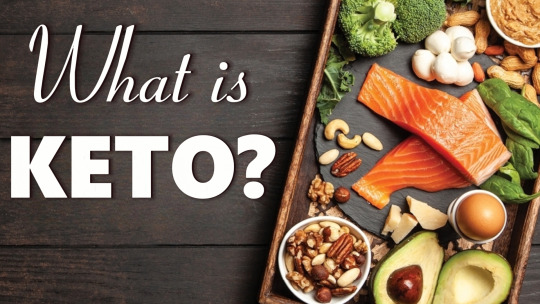
Today, we're diving into the world of health and nutrition to explore a trending diet that's been gaining a lot of attention lately. Keto! We are unraveling the Mystery of the ketogenic diet and why its popularity is growing so rapidly around the globe. So, without further ado, let's jump right in!
Keto is a low-carb, high-fat way of eating that has been shown to have numerous health benefits.
The primary goal of the ketogenic diet is to put your body into a state of ketosis. Ketosis occurs when your body switches from using glucose for energy to burning fat instead. By doing this, your body becomes a fat-burning machine, helping you lose weight and improve your overall health.
So, how exactly does the ketogenic diet work? Well, it's all about macronutrient balance. On a standard diet, our bodies rely on carbohydrates as the main source of fuel. However, when you restrict carbs and increase your fat intake, your body enters this state of ketosis and starts producing ketones. These ketones are then used as fuel for the brain and body.
Let's break it down into three key elements: low-carb, moderate protein, and high fat.
The low-carb aspect of Keto involves limiting your carbohydrate intake to around 20–50 grams per day, depending on your personal goals and health factors. This means cutting out sugary foods, grains, and starchy vegetables, while focusing on healthier options like leafy greens, avocados, and berries.
Moderate protein – it's important to consume a moderate amount while on Keto. This is because excess protein can actually be converted into glucose, which can potentially hinder ketosis. Prioritizing lean meats, fish, and plant-based protein sources will help you maintain the right balance.
Lastly, the high-fat aspect of Keto. Healthy fats like avocado oil, coconut oil, and olive oil become your new best friends. These fats not only provide energy but also keep you feeling satisfied and full. It's important to emphasize good fats and avoid unhealthy sources like processed oils.
Now that we understand the basics, let's talk about the potential benefits of the ketogenic diet.
1. Weight loss – The ketogenic diet has been shown to be highly effective for weight loss due to its ability to control hunger hormones and encourage fat metabolism.
2. Improved mental focus – Ketones are a great source of fuel for the brain, which can lead to improved cognitive function and mental clarity.
3. Increased energy levels – By relying on fat instead of carbs for energy, many Keto followers report feeling more energized throughout the day.
4. Better blood sugar control – Since carbohydrates significantly impact blood sugar levels, reducing carb intake can help maintain a stable blood sugar level and potentially benefit those with diabetes.
5. Decreased inflammation – Studies have shown that the ketogenic diet reduces inflammation in the body, which is associated with various health conditions.
As with any diet, though, it's important to consider the potential drawbacks or challenges of going Keto.
While the ketogenic diet can be highly effective for weight loss and offer numerous benefits, it requires careful planning to ensure nutrient adequacy and avoid deficiencies. That's why a personalized keto meal plan have been proven to make all the difference. But which meal plan is the right one for you? To find the answer to that question can be quite overwhelming, and unfortunately, many Keto programs do not deliver what they promise.
However, In preparation to this article, our team has done a lot of research, and we have listed just below what we think are the 3 best and effective personalized keto programs on the market right now. Just click on the links to check them out.
We hope you find this information helpful, Also, if you have any questions or personal experiences with the ketogenic diet, feel free to contact us or leave a comment down below – we'd love to hear from you!
#ketodiet#ketofood#lowcarb#healthydiet#weightlossjourney#ketolifestyle#ketocommunity#ketorecipes#ketogenicdiet#keto
2 notes
·
View notes
Text
5 Tips to Identify the Perfect Customer Cohorts for Your New Product Line: Ken Research
It is always an exciting journey for any brand to launch a new product line. But knowing your audience inside out is one of the critical aspects of success. By pointing to the right cohorts of your targeted consumer, you can tailor your marketing efforts and product features that resonate with your consumers. So, how can you identify those cohorts? Here is a list of 5 ways that can enable you to tap perfect customer cohorts for your new product line.
1. Data-Driven Demographics:
To identify the segments that align with your product line, begin with demographics. Determine the age, gender, location, income, and education of your targeted consumer.

For example, Apple identified a cohort that focused on a more budget-friendly iPhone option without compromising performance. So, they introduced the iPhone SE that targeted individuals who look for the latest technology in a smaller affordable package. That’s how Apple catered to a specific segment of the market after understanding this cohort’s preference for a compact and cost-effective device.
2. Psychographic Profiling:
Demographics are important but if you want to flourish in the market, it is not enough. You need to delve into psychographics- the attitudes, values, and lifestyle choices of your potential consumers.
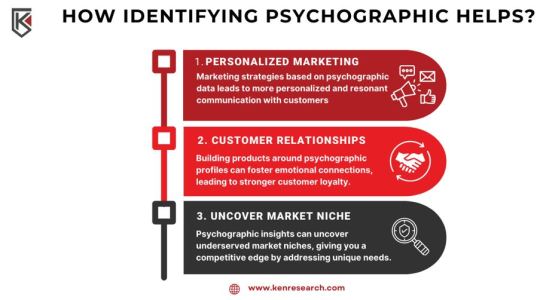
Lululemon, the activewear brand that is known for its premium women’s activewear, diversified its product line to include men's activewear as well. It is because they recognized the rising cohort of health-concern males seeking stylish yet comfortable workout apparel. That’s how Lululemon tapped into a previously underserved segment, and capitalized it.
3. Behavioral Patterns:
The third comes to behavioral patterns. It is another important way to determine the right cohort. Examine consumer behavior to unleash some actionable insights. Just like Beyond Meat did.
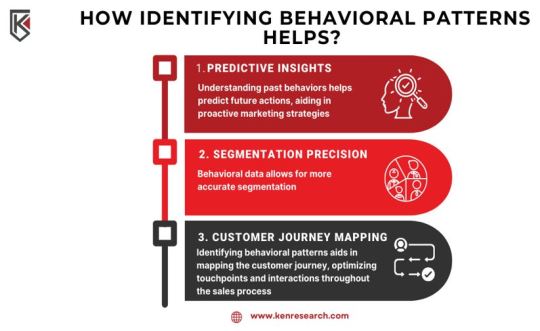
Beyond Meat analyzed a cohort of environmentally and health-conscious individuals who were looking for alternatives to traditional meat. That’s when they launched plant-based burgers that replicate the exact taste and texture of meat. This also addressed sustainability and health which became one of the attributes behind the success of Beyond Meat. They wonderfully created a product line that served the requirement for ethical and nutritious food options.
4. Pain Point Prioritization:
Addressing the pain point of your customer and offering them the right solution is the best way to thrive in the market. Hence, identify the issues or challenges that your services or products can resolve just like Peloton did.
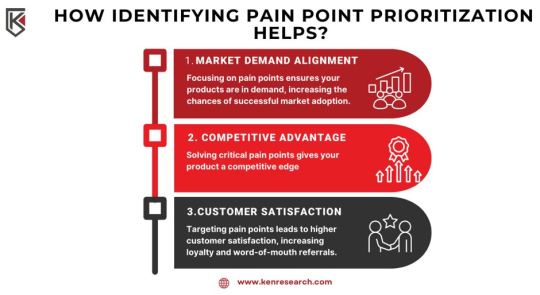
Wish to know the pain points of your consumers? Book a free discovery call with Market experts
It recognized a cohort of fitness enthusiasts who seek a convenient and engaging place for workouts and that’s it. Peloton launched a wide range of connected exercise equipment and online classes that cater to consumers who prefer personalized fitness experiences from the comfort of their homes. This resulted in the rapid growth and success of the brand.
However, not everyone gets lucky in tapping the whitespaces in the market. That’s why over 500+ CXOs chose Ken Research to enable them to identify the consumer’s challenges and make a successful business by offering solutions to those issues.
Do you also wish to determine the pain points of your targeted consumers and build a thriving business? Visit the website now or fill in the details to receive a Free 30 minutes of call with Ken Consultants today.
5. Social Influences and Networks:
While you are trying to find out cohorts, it’s important to consider the social dynamics that may influence your key audience or clients.

Casper an e-commerce company that sells sleep products online and in retail locations, spotted a cohort of young adults, especially millennials who appreciated convenience and a seamless online shopping experience. And there they disrupted the whole mattress industry by launching memory foam mattresses in a compact box and leveraging a direct-to-customer model. This helped Casper gain a strong foothold in the market simply by offering this cohort’s preferences for hassle-free purchasing.
To sum it all up, understanding your consumer cohorts is an excellent way for launching a successful new product line. Several brands have demonstrated the impact of applying these strategies in various contexts and you can do it. Just make use of data, understand psychographics, focus on customer behaviors, address their pain points, and not to forget, consider their social dynamics. Doing this will surely help you tailor your strategy to resonate with a specific group and make a significant business impact. In case, you need some consumer data to back your business strategy, consider Ken research to get some authentic customer insights. Visit the website now.
2 notes
·
View notes
Text
KEY POINTS
Cargill, the largest privately held company in the U.S. with $165 billion in 2022 revenue, is investing for the long game in plant-based food and a world which it forecasts will need 70% more protein over the next three decades.
The agribusiness giant got into the market later than buzzy startups including Beyond Meat and Impossible Foods, as well as traditional rivals Tyson Foods, Hormel Foods and Smithfield Foods, but it is growing its alternative-protein portfolio including lab-grown beef, chicken and fish made from animal cells.

The plant-based protein boom has stalled, with buzzy startups humbled and food giants retreating, but Cargill forecasts 70% more protein consumption over the next 25 to 30 years. "That protein has to come from somewhere," says its chief technology officer and head of R&D, Florian Schattenmann.
The plant-based protein boom has stalled, with buzzy startups humbled and food giants retreating, but Cargill forecasts 70% more protein consumption over the next 25 to 30 years. “That protein has to come from somewhere,” says its chief technology officer and head of R&D, Florian Schattenmann.
Cargill
Cargill is hardly a household name among consumers — even though it’s the largest privately held company in the U.S., with $165 billion in revenue in its fiscal year 2022. The 158-year-old Minneapolis-based agribusiness giant produces a slew of branded and private-label meats and food ingredients and offers a wide range of agriculture-related products and services.
In the last few years, flying somewhat under the public radar, Cargill has also become a formidable player in the plant-based meat industry, which has come back down to Earth after its meteoric rise about a decade ago, when venture-capital-backed disruptors Beyond Meat
and Impossible Foods came on like gangbusters. Traditional meat companies, including Tyson Foods, Hormel Foods and Chinese-owned Smithfield Foods, jumped on the bandwagon, and the marketplace was soon flooded with faux beef, chicken and sausage.
Strategically, Cargill joined later in the game, and is now positioning itself to win the food fight that its competitors started.
In February 2020, almost a year after Beyond Meat’s IPO, Cargill introduced private-label plant-based patties and ground products for global retail and foodservice markets. Later that year, the company came out with a branded line — called Crave House, featuring plant-based burgers, ground, meatballs and sausages — for those same markets, as well as e-commerce channels. Additionally, Cargill began marketing several plant-based protein ingredients, made from soy, pea and wheat, to food and beverage manufacturers worldwide.
“We are a unique player,” said Florian Schattenmann, Cargill’s chief technology officer and head of research and development. “We have everything from the ingredients to the final meat-processing and distribution, and don’t play in fancy brands. That’s our strategy. I wouldn’t say it’s tempered, but deliberate and thoughtful, knowing where our strengths are and not overbuilding in watching the market.”
2 notes
·
View notes